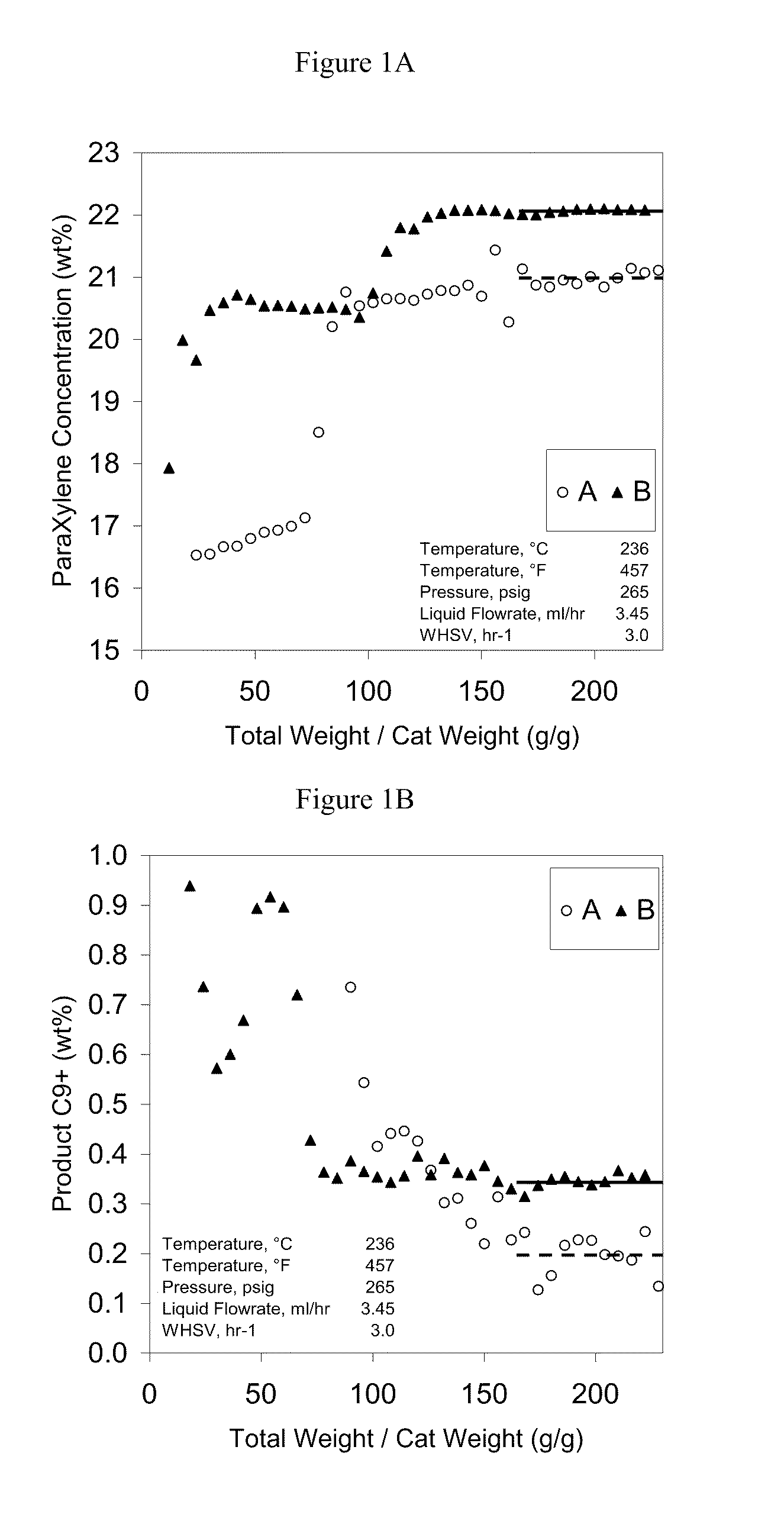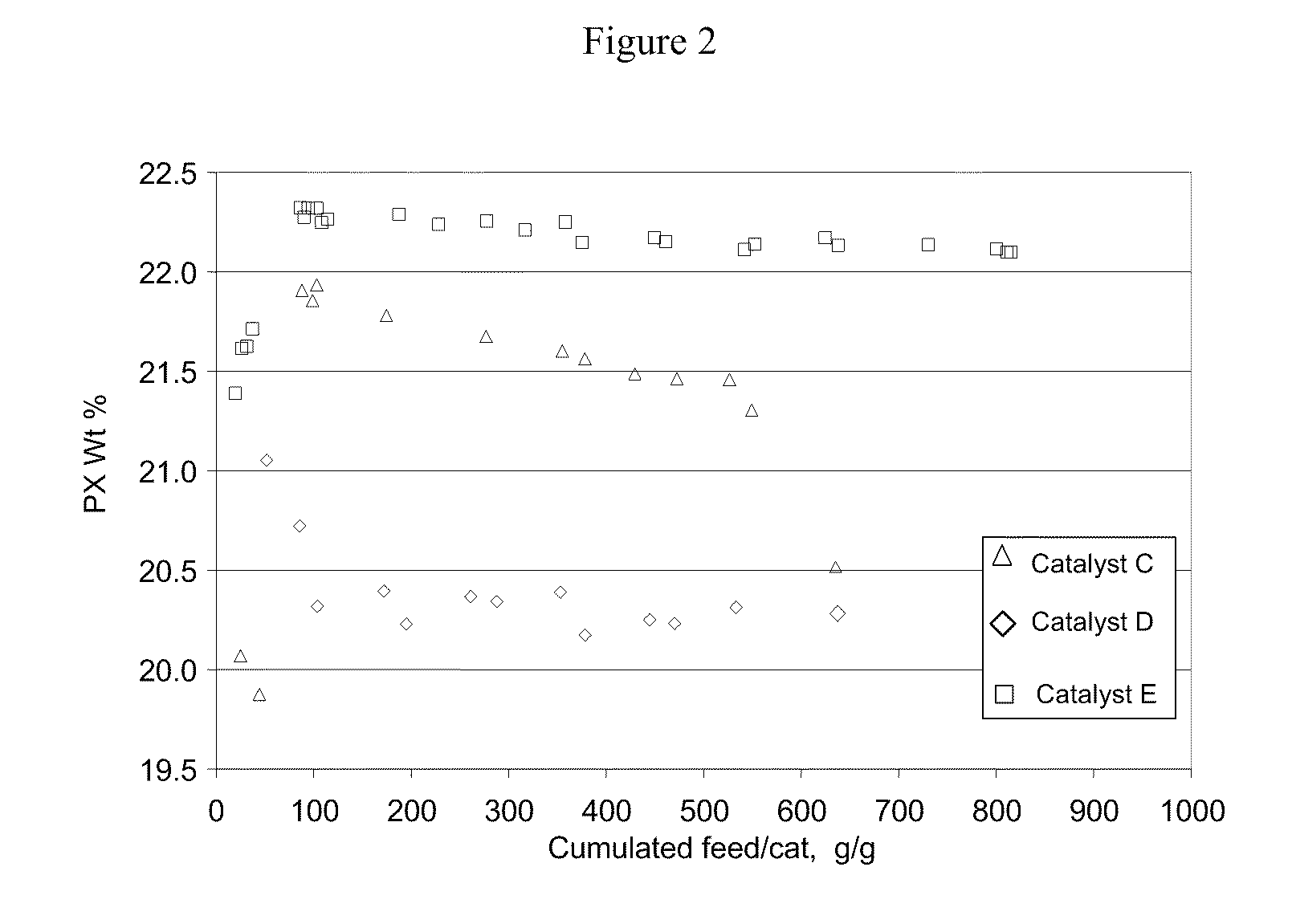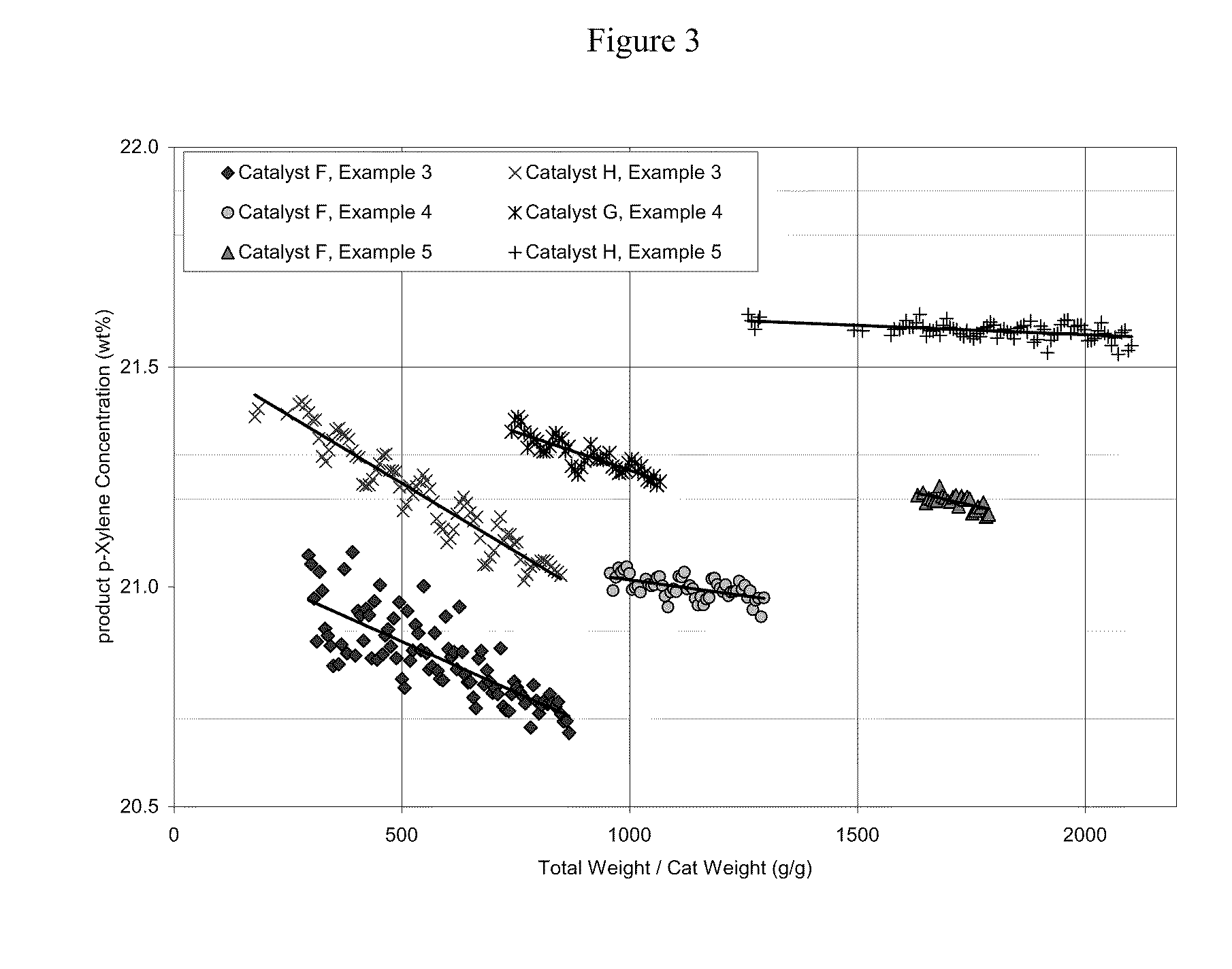Xylene Isomerization Process and Catalyst Therefor
- Summary
- Abstract
- Description
- Claims
- Application Information
AI Technical Summary
Benefits of technology
Problems solved by technology
Method used
Image
Examples
example 1
[0055]A sample of 1 / 16″ extruded H-ZSM-5 catalyst, obtained from PQ Corporation, having a silica / alumina ratio of 30, was ground to 30 / 60 mesh and packed in an 0.180″ID×0.625″ length tubular reactor to a level of 0.13 gram. The catalyst was then dried under flowing nitrogen gas at 200° C. for 10 hours to remove moisture. Afterward, the catalyst was contacted with xylenes feed, first without dissolved H2 (H2-free according to the present invention), and then with H2 dissolved in the feed to a level of 130 ppm by weight. Isomerization conditions were set at 280 psia, 232° C. and 3 WHSV. Under these conditions, the xylenes feed was isomerized and the rate of catalyst deactivation or regeneration was calculated based on product analysis.
[0056]Results, as shown in the Table 1, demonstrate that the presence of dissolved hydrogen not only stopped catalyst deactivation but also restored and maintain the catalyst activity.
TABLE 1Xylene Feedwithout dissolved H2with dissolved H2Change in PX yi...
example 2
[0059]This Example illustrates that the unexpected findings with respect to the process of the invention may be achieved by catalysts other catalysts.
[0060]MCM49 and ZSM5 zeolites (shown in Table 3) were tested for liquid phase xylene isomerization according to the invention. The feeds used are shown in Table 4, with results shown in FIG. 1. Both zeolites isomerized xylenes to para-xylenes at 236° C., 3 weighted hourly space velocity (1 gram of catalyst used), and 265 psig. MCM49 had a higher para-xylene yield but also higher by-products as indicated by the product C9+ content, also shown in FIG. 1. Thus, one could choose either zeolite for liquid phase xylene isomerization on a case-by-case basis.
TABLE 3CatalystCrystalForm TestedFinishingAIIIpowderExchanged and Calcined for 6hours at 1000 F.BIVSelf-Bound 1 / 16″Exchanged and Calcined for 8Quadrulobe (extrudedhours at 1000 F.with PVA)
TABLE 4Feed wt % forFeed wt % forFeed ComponentCatalyst ACatalyst BMethylcyclohexane0.840.01DiMethylcy...
example 3
[0061]The present inventors have also discovered that silica / alumina ratio and crystal size of the HZSM-5 zeolite are important factors to the catalyst performance. Thus for liquid phase xylenes isomerization according to the present invention, a catalyst based on a HZSM-5 zeolite with silica / alumina ratio of 30 or less and crystal size less than 0.1 micron provides even more advantageous liquid phase xylenes isomerization performance, superior to that of the catalysts with ZSM-5 zeolites having silica / alumina ratios and crystal sizes outside the specified ranges.
[0062]Three ZSM-5 extrudates were prepared using 3 different ZSM5 crystals and are shown in Table 5. The crystals were ion exchanged to proton form and extruded into 1 / 20″ quadrulobes extrudates with an alumina binder and 1% acetic acid as an extrusion aide. The weight ratio of crystal to binder was 4. The extrudates were calcined at 1000° F.
TABLE 5CatalystReactorFlowrate,loading,Reactor temp.pressure,Weight HourlyCatalystC...
PUM
| Property | Measurement | Unit |
|---|---|---|
| Temperature | aaaaa | aaaaa |
| Temperature | aaaaa | aaaaa |
| Length | aaaaa | aaaaa |
Abstract
Description
Claims
Application Information
 Login to View More
Login to View More - R&D
- Intellectual Property
- Life Sciences
- Materials
- Tech Scout
- Unparalleled Data Quality
- Higher Quality Content
- 60% Fewer Hallucinations
Browse by: Latest US Patents, China's latest patents, Technical Efficacy Thesaurus, Application Domain, Technology Topic, Popular Technical Reports.
© 2025 PatSnap. All rights reserved.Legal|Privacy policy|Modern Slavery Act Transparency Statement|Sitemap|About US| Contact US: help@patsnap.com



